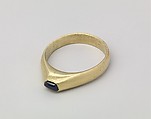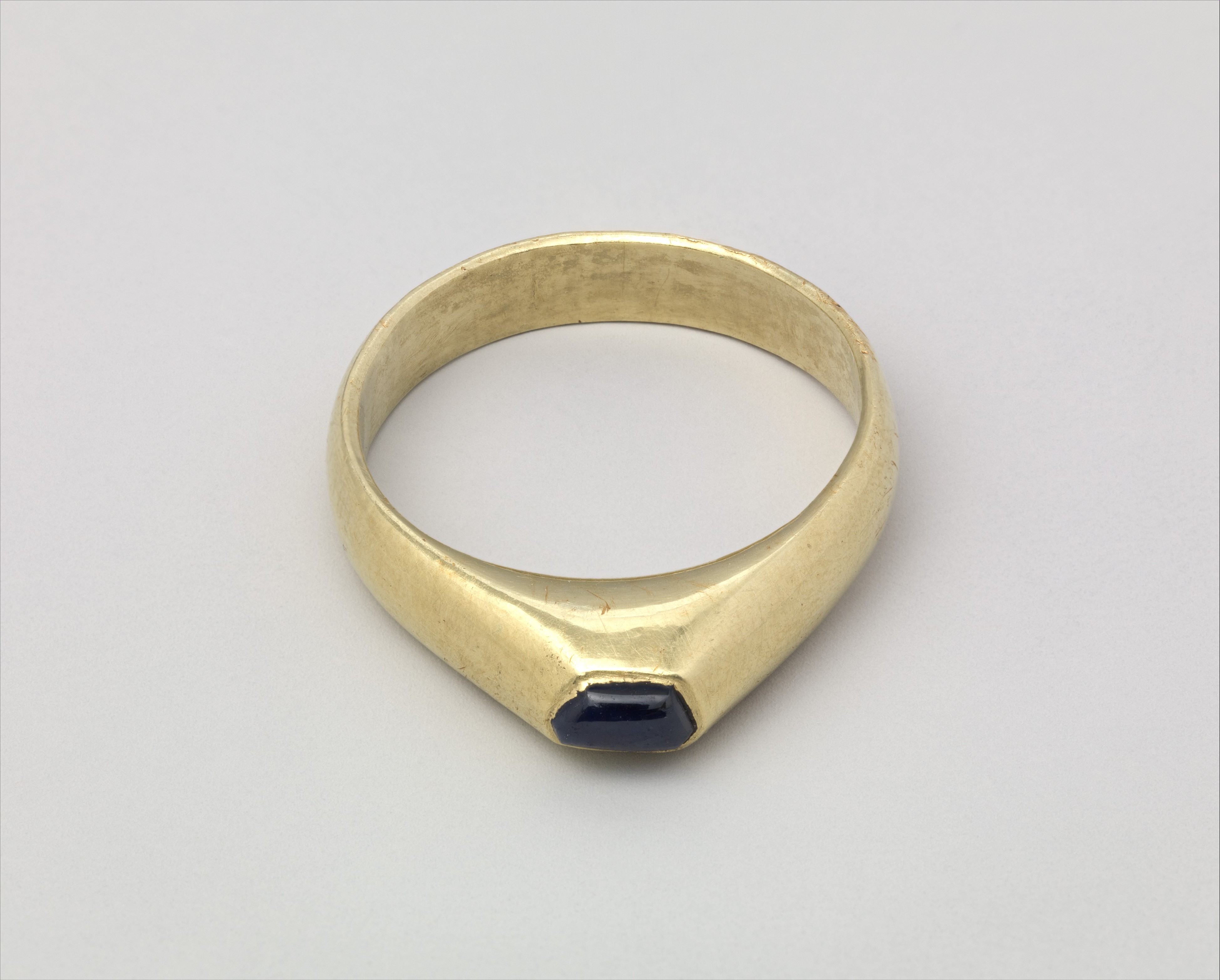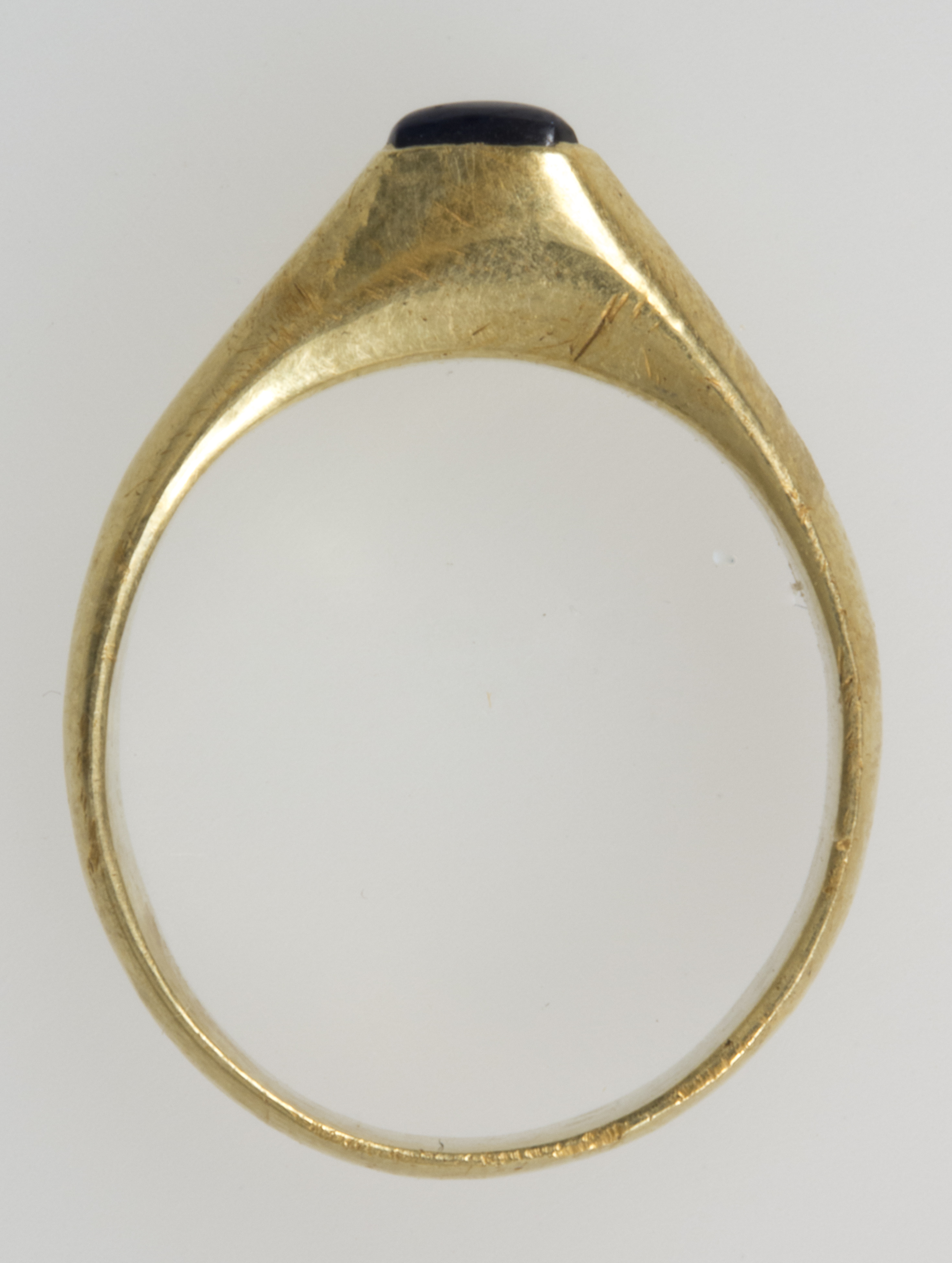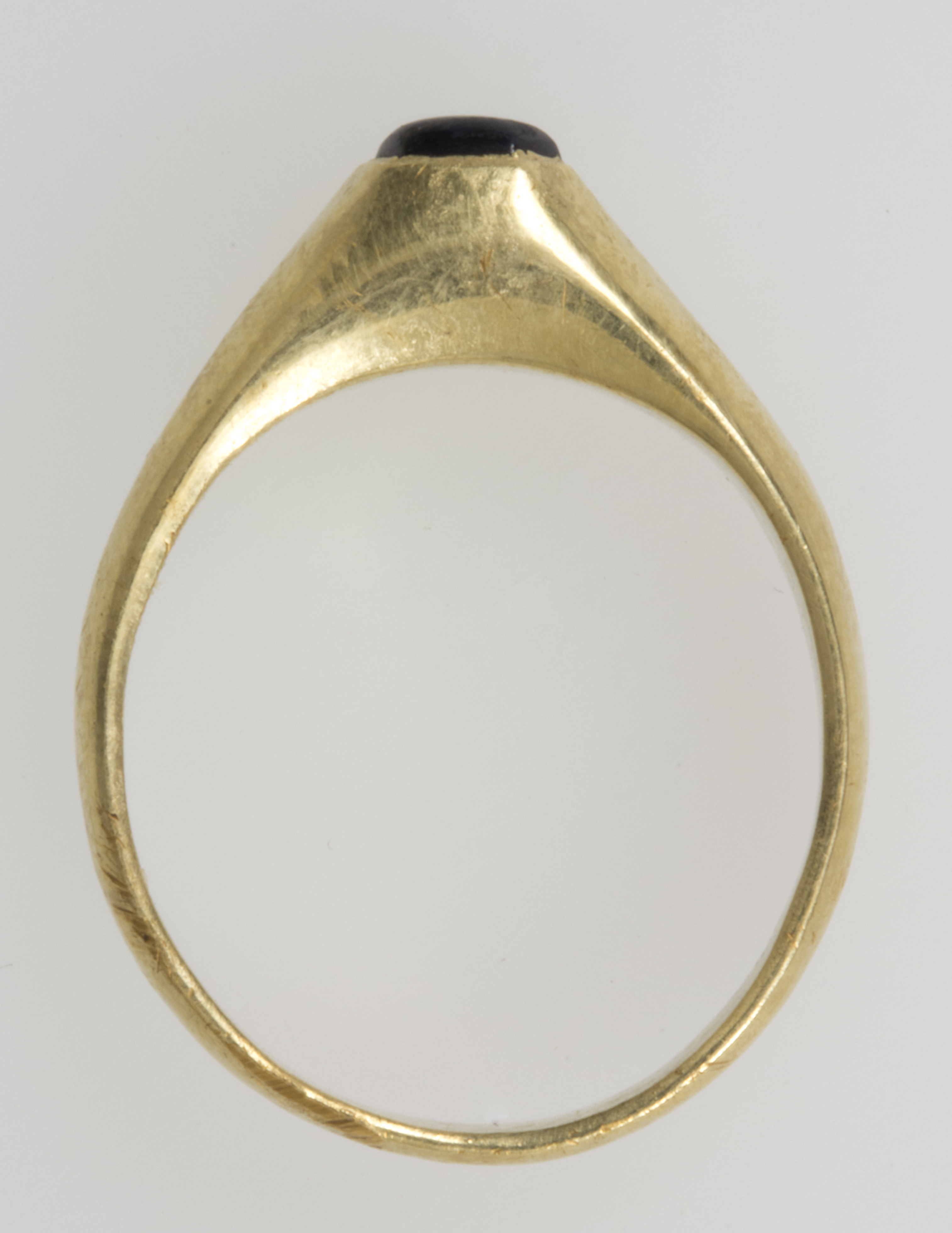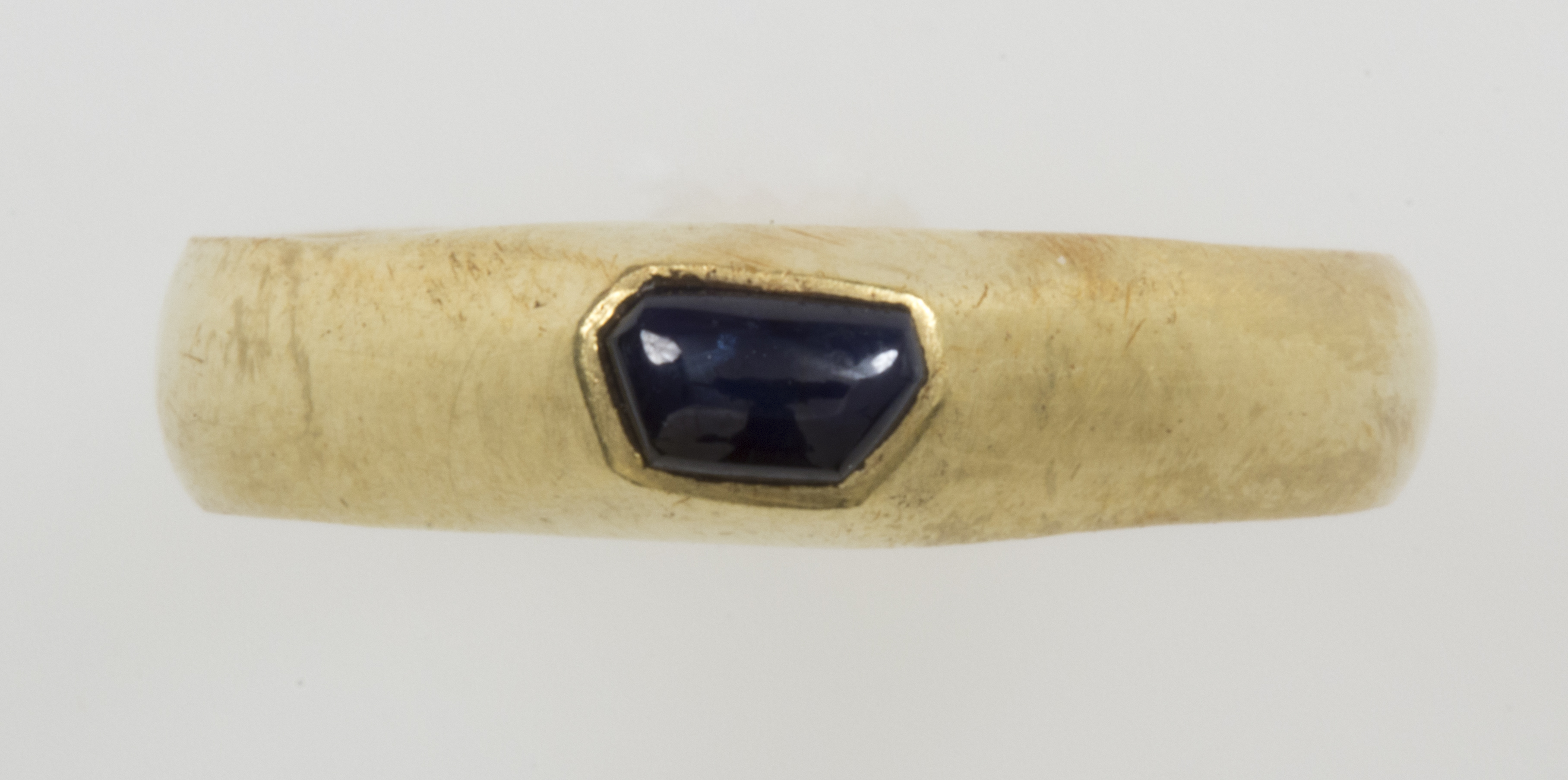Stirrup Ring
The stirrup ring, with its distinctive form that suggests both a horse stirrup and a gothic arch, was in fashion from the twelfth century well into the fourteenth century. They were most commonly set with a sapphire and worn by both clergy and laymen. The present example is distinguished by its elegant simplicity. Less heavy than rings found in the tombs of clerics, which were generally worn over gloves, this example was most likely the finger ornament of a layman.
Due to rights restrictions, this image cannot be enlarged, viewed at full screen, or downloaded.
This artwork is meant to be viewed from right to left. Scroll left to view more.
